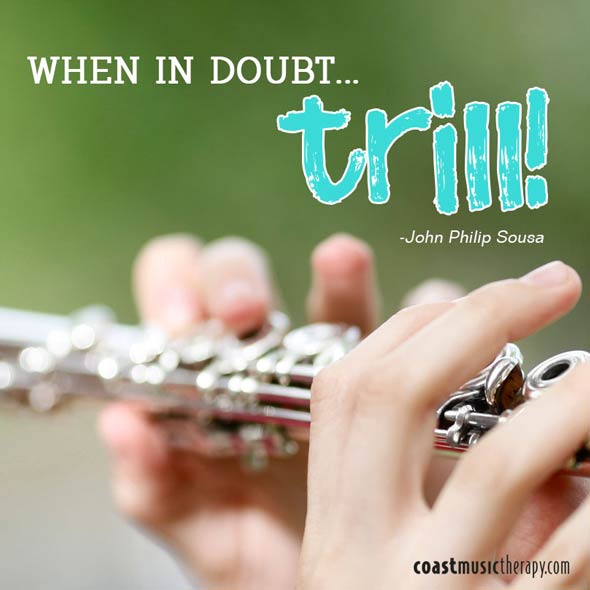There are two types of trills that appear in the Bach. The first is just a trill. (See Bach p. 36, last measure, final beat, S1 & S2.) These trills should start on the note above the written note. Keep it simple: four repercussions is enough. For the given example, S1 should sing B-A#-B-A# and S2 should sing D-C#-D-C#. It doesn't need to be any longer than that. In fact, at the tempo, it will feel more like fast vibrato. The emphasis, however, shouldn't be on how fast you can trill but on how clearly you can make those four notes. Trill speed is not an issue, and you shouldn't be concerned with matching your trill to the person next to you. Just do it cleanly!
The other type of trill is one preceded by a tied note from the step above. (These appear in Bach starting on p. 10, m.123.) Sing these with the tied note (the higher note) as the start of the trill. The effect should be that your trill starts a little later than the beat. Here's an example:
- In m.123, sing F# on beat one. On beat two, hold that F# from beat one and then sing E-F#-E to complete the trill.
Don't get confused, though. There's a "regular" trill at the top of p. 11 for S1. That's just a simple G-F#-G-F#.
I will address any of your questions about these when we meet on Sunday. How trilling!

No comments:
Post a Comment